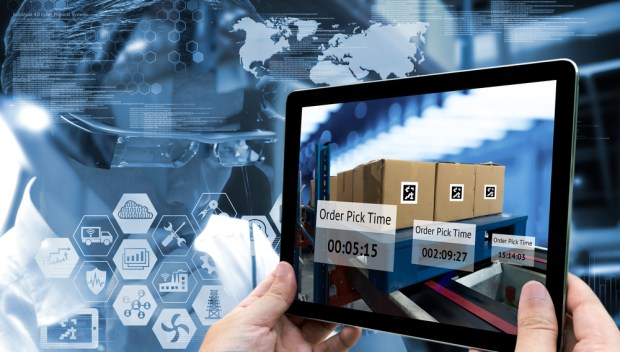Supply Chain Digitization Stumbles Over Collaboration

Supply chains continue to lag in digitization and technology adoption, with hurdles often relating to the costs, lack of understanding, or implementation difficulties associated with new tools. But a new report from American Shipper, sponsored by US Bank and Amber Road, reveals the collaboration required to promote adoption, and not the technology itself, may be a key barrier in supply chain digitization.
The report, “Supply Chain Technology Innovation Benchmark Study,” is labeled a “reality check” by analysts warning that significant portions of companies continue to rely on outdated tools (like Excel) to manage their supply chains.
“The development and deployment of technology in supply chain is advancing at an exponential rate,” wrote American Shipper Managing Editor Ben Meyer in the report’s introduction, “but the industry is still often derided as slow to adopt and adapt.”
Several technologies remain the focal point of supply chain innovation, including the Internet of Things, predictive analytics, blockchain, artificial intelligence and machine learning. As the world’s major traders, supply chain management solutions providers, logistics firms and other participants push for adoption of these tools, collaboration remains an essential component of progress, according to the report. Yet amid a rise in the number of joint ventures in this area, including a surge in partnerships to explore and integrate blockchain to address supply chain friction, not all initiatives have proven successful.
The report singled out TradeLens, a collaboration between A.P. Moller-Maersk and IBM announced last year that integrates blockchain technology into their joint shipping management solution. At the time the project was announced, IBM said 94 companies had signed up to participate on the platform that allows trading partners to gain a streamlined view of operations and collaborate with each other, while maintaining the integrity and security of key data.
Yet according to US Bank and American Shipper’s report, the initiative is now “reportedly struggling to get other container carriers to sign up because they worry about the neutrality of a platform run by their largest competitor,” adding that “without other carriers, the platform is essentially useless no matter how innovative the underlying technology.”
While the TradeLens initiative reveals key barriers to adoption of cutting-edge technologies like blockchain in the supply chain management sphere, the case also suggests that the technologies themselves are not necessarily what’s preventing companies from making progress in their digitization efforts. While executives may have reservations or lack understanding about how these unfamiliar technologies work, the hesitancy often stems from the need to partner with competing industry players.
The Success Story Of Payments
The adoption of tools like blockchain in supply chain management, trade and logistics are often discussed in the context of collaboration. Trading partners, banks, logistics service providers, customs officials, and other participants need to be on the same page for goods to flow seamlessly, and while tools like blockchain vow to achieve that goal, the technology’s reliance on cooperation may be a key barrier to adoption.
But data from US Bank and American Shipper’s report also suggests that organizations are indeed adopting tools to automate various aspects of their supply chains, including points that don’t necessarily rely on collaboration between competing forces to succeed.
Payments and eInvoicing, for instance, are among the highest areas of technology adoption for companies surveyed in the report, with 45 percent of firms noting that invoice management and payments have already been digitized — second only to the 48 percent of firms that said they have adopted technology to enhance visibility and tracking of goods in transit.
Supply chain technology adoption is big business, with researchers estimating that firms will spend a combined $87.8 billion in this field in 2022. Yet organizations continue to face hurdles, most notably the cost associated with adopting and implementing newer tools to enhance their supply chains.
With 17 percent of organizations choosing “none of the above” when identifying which digital supply chain tools they have already adopted — and 13 percent admitting that all supply chain processes are entirely manual — the report makes clear that barriers like cost, lack of understanding and need for collaboration are proving too high to clear for many firms.
